Creation: Lazarus Taxa Come Forth!

A Sunday guest post by my brilliant husband, Gregg.
Every Sunday, my clever husband offers me a “day of rest” by taking over the homemaker duties here. His primary topic, the Biblical Truth of Creation vs. Darwinism, is a subject that has broad reaching scientific, social, and metaphysical implications and is gaining more and more attention in our modern culture. For believers and non-believers alike, the primary purpose is to present scientific, historical, logical, and/or sociological data in an empirical and defensible fashion, as much as possible written in layman’s terms, and in a format suitable for supplementing any homeschool curriculum whether you choose to believe the Biblical account — or secular guesses — about the origins of human life on earth.
Lazarus Taxa
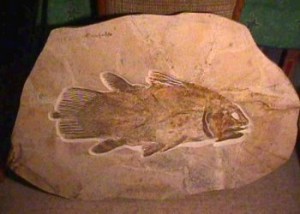
Living fossils are called “Lazarus taxa,” a strikingly biblical term, and these are organisms that were thought to be extinct, only to turn up alive and doing fine in modern populations.
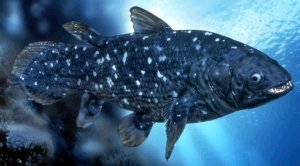
One of the most spectacular living fossils and most famous is the Coelacanth, a lobe-finned fish. Less than 100 years ago, the fish was known only from fossilized remains Darwinists assume are older than 70 million years. Its fossils are mainly found in Devonian strata, which are assigned a stunningly vast age of 400 million years.
This fish was considered by many to be a key transitional form (“missing link”) between fish and amphibians. The Darwinist assumption is that the Coelacanth decided, one day, to walk around on its lobe shaped fins and become an amphibian. However, a live coelacanth hauled up in a fishing net off Madagascar in 1938 showed the same well-designed form as the fossils. It uses its unique fins to orient itself vertically in the deepest seas of the Indian Ocean, not for “walking” onto land from shallow waters. Since then, living coelacanths have been found in the Indian Ocean and over 6000 miles away as recently as last month.
Where is any evidence of constant mutation and the instant natural selection of the earth’s oceans having made even one significant change in this fish over its supposed 400-million-year existence?
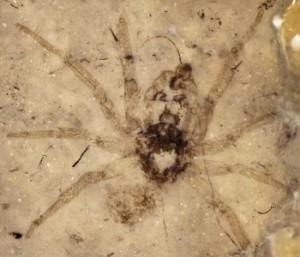
A fossilized Plectreuridae spider was found in Daohugou in northern China. Microscopic examination revealed it was so much like its living counterpart in modern times that paleontologist and lead author Paul Selden told Wired Science, “The scimitar-shaped structure you notice out of the male is so distinctive. Looking at modern ones, you think, well, it’s just a dead ringer.”
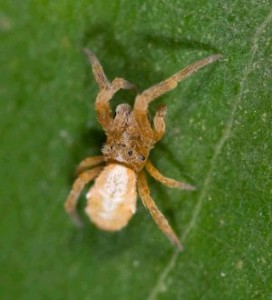
Darwinists place this find at 165 million years ago in the middle of the so-called Jurassic era. But it should no longer be a dead ringer, assuming evolution is true. It should be extinct. It should be replaced by a differently evolved spider. Or replaced even by some non-spider. Something should be different after so much time.
With 165 million years for constant mutations to build up and natural selection to occur, even the most ardent Darwinists should reasonably expect tremendous differences in the spider’s appearance by now. Instead, the Plectreurid spider fossil looks young, as though there has not been much time at all between this Chinese Jurassic representative and the living spiders.
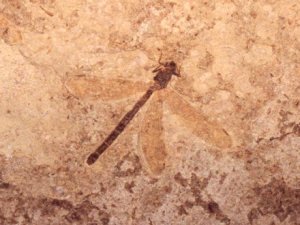
The tiny, metallic green dragonfly known as the Ancient Greenling Damselfly was found at Long Swamp, in the Discovery Bay Coastal Park near Portland, by Department of Sustainability and Environment researchers. The damselfly, part of the dragonfly group Odonata, is the only living representative of the family Hemiphlebiidae. Its so-called ancient predecessors are found solely in a timeframe that Darwinists claim is 250-300 million-year-old fossil records anywhere from Brazil to Russia.
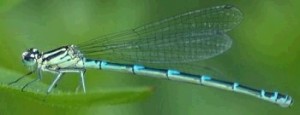
Following evolutionary concepts, 300 million years ought to be more than enough time for mutations to occur in the damselfly and for natural selection to weed out the unfit and generate a new living form from the old. In fact, given the assumed evolutionary process of mutations and natural selection relentlessly occurring over time, even at miraculously slow rates, this vast age ought to guarantee at least some alteration in the insect. But not only is the damselfly still recognizable as a damselfly, but even more specifically as the Ancient Greenling Damselfly.
“It’s not every day that you find a living fossil pretty much in your backyard,” Arthur Rylah Institute senior scientist Di Crowther said.
Really? With all due respect to “Ms.” Crowther, what about the common cockroach? Darwinists estimate the earliest cockroach fossils are 350 to 400 million years old and remain essentially unchanged. With 350 to 400 million years for constant mutations to build up and natural selection to occur, even the most ardent Darwinists should reasonably expect tremendous differences in the appearance of the cockroach by now

The fact is, we are surrounded by so-called living fossils that are completely ignored. Ranging from single-cell algal filaments to lobsters, and magnolia flowers to gar fish, the living counterpart looks so much like its fossilized predecessors that identification down to the species level is obvious.

Until recently, Graptolites were considered index fossils for the Ordovician period, 300 million years old. Yet they recently were found still living in the south Pacific. (Sue Rigby, “Graptolites Come to Life,” Nature (vol. 362, March 18, 1993), pp. 209-210.)
The tuatara were known to be extinct since the so-called Cretaceous Period until found still living in New Zealand. The Lepidocaris crustacean was only ever found as fossils in Devonian rocks, the Metasequoia conifer tree was thought to be extinct for the past 20 million years, the Neopilina mollusk has supposedly been extinct for 280 million years, the lingula brachiopod was known to be “extinct” since the Ordovician, and even the famous trilobite, the chief index fossil of the even more ancient Cambrian Period were all known to be extinct for hundreds of millions of years. Until they were all still found living today. (“Living Fossil Resembles Long-Extinct Trilobite,” Science Digest [vol. 42, December 1957], p. 59.)
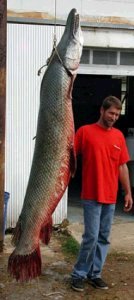
Darwinists reserve the title of “living fossil” for those organisms which had been thought extinct until they suddenly turn up living today. Prior to the discovery of living specimens, all the argumentation is that of assumption and speculation in the name of holy Darwinism. “The Coelacanth MUST have walked on its fins. This supports Darwinian evolution after all.” Once found alive and so many of those baseless assumptions must be thrown out, the argument then turns to, “A lot more research must be done in order to see how this living species supports Darwinian evolution.”
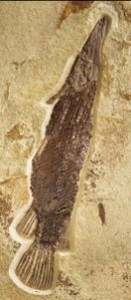
It would be almost funny if it weren’t so sadly pathetic.
Reserving the title of living fossil only for those allegedly “rare finds” that turn out to still be alive furthers the Darwinian philosophical bias and supports the primary Darwinist assumption. The truth is that the vast numbers of living organisms that are already known to exist in the fossil record are largely ignored as examples of living fossils. Not surprisingly, these include those organisms supposed to be the most ancient of all. Darwinian evolution is supposed to have begun when prokaryotes evolved out of the mythical “primeval soup.”
“Fossils very similar to living prokaryotes are found in rocks about 3,500 million years old.” Colin Patterson, Evolution (Second Edition, London, Natural History Museum, 1999), p. 129.
Likewise, the primitive one-celled organisms called eukaryotes are allegeldy “evolved” from prokaryotes. Of course, eukaryotes are also still living, essentially unchanged, in the modern world.
“Simple eukaryotes, resembling living unicellular algae, are first confirmed in the fossil record about 1500 million years ago and first suspected in rocks almost 2000 million years old.” Colin Patterson, Evolution (Second Edition, London, Natural History Museum, 1999), p. 131.
One not afflicted with the philosophical bias inherent in Darwinism, methodological naturalism, and/or secular humanism can easily understand why it is important for Darwinists to utterly ignore these living things as also qualifying as living fossils. Looking at the base argument with utter objectivity, one can clearly see the agenda, and the bias.
Modern bacteria and modern blue-green algae most certainly should be considered living fossils. They have been found in abundance in rocks from South America allegedly dating back 3.4 billion years. Modern soil bacteria have even been found in Precambrian rocks. One wonders why, if Darwinian evolution is true, these most “primitive” of organisms have not changed significantly in over a billion years by means of constant mutation and natural selection.
In one of many fallacious Darwinist arguments, Stephen Jay Gould, insisted that there is no evidence whatever against evolution. This argument is fallacious because it is an argument from ignorance. There is, after all, no evidence whatever supporting evolution that is sustained by observable, operational, empirical science which agrees with logic. Having a complete absence of evidence either for or against something is very far from proving anything at all.
Nevertheless, Gould stresses the fact that bacteria have changed little since ancient times.
“The most salient feature of life has been the stability of its bacterial mode from the beginning of the fossil record until today and, with little doubt, into all future time so long as the Earth endures.” Stephen J. Gould, “The Evolution of Life.” In Evolution! Facts and Fallacies, Ed. by J. Wm. Schopf (San Diego: Academic Press, 1999), p. 5.
In the supposed “oldest” period with metazoan fossils, all the present-day animal phyla are found as fossils, largely in modern form. Until recently, the phylum of vertebrates had been considered a much later arrival in so-called evolutionary history. Not anymore. The vertebrate phylum now extends well into the Cambrian period supported by the recent discovery of two fossil fish in China.
“The two new fossils . . . from Chengjiang are the most convincing Early Cambrian vertebrates ever found.” Philippe Janvier, “Catching the First Fish,” Nature (vol. 402, November 4, 1999), p. 21.
Richard Dawkins has this to say about the Cambrian Explosion:
“And we find many of them already in an advanced state of evolution, the very first time they appear. It is as though they were just planted there, without any evolutionary history. Needless to say, this appearance of sudden planting has delighted creationists.” Richard Dawkins, The Blind Watchmaker (New York: W.W. Norton Co., 1987).
One other thing is true. This “sudden planting,” now to include vertebrates, has certainly dismayed Darwinists. The truth is that we are surrounded by so-called living fossils, surrounded by Lazarus taxa. Consider the living fossils known as insects…
“Some 84 percent of the insect families alive today were alive 100 million years ago…” Carl Zimmer, “Insects Ascendant,” Discover (vol. 14, November 1993), p. 30.
Insects such as the millipedes, are certainly a perfect example of a living fossil.
“…the oldest fossils of land-dwelling animals are millipedes, dating to more than 425 million years ago. Incredibly, the archaic forms are nearly indistinguishable from certain groups living today.” William A. Shear, “Millipedes,” American Scientist (vol. 87, May/June 1999), p. 234
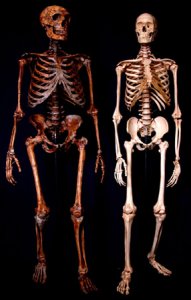
What about human beings? There have been so many authoritative and scientific sounding names for old human bones in the last hundred years, it almost makes one dizzy. Neanderthal, Java Man, Beijing Man and so on… all perfect examples of human beings it turns out. Shouldn’t the constant mutation and natural selection have altered the human form after 1 to 6 million years or however long Darwinists now claim human beings have been around?
Whether bees or ants, cicadas or beetles, termites or cockroaches, the fossils of these and millions of other insects are always practically identical to, although often larger than, their modern descendants. The same applies to arachnids and myriapods.
The Truth
Darwinist apologists have no valid, cogent, sound explanation for the gaps in the fossil record because they are locked into a paradigm of uniformitarianism.
“The fossil record is often so sparse that … there are plenty of cases where groups survived for tens of millions of years without leaving a single fossil.” Peter J. Bowler, Review of In Search of Deep Time, by Henry Gee (Free Press, 1999). In American Scientist (vol. 88, March/April 2000), p. 169.
A person with even a fragment of objectivity can see the foolishness in the constant Darwinian apologia. The truth is that the fossil record is not a record of long evolutionary ages, with distinctive life forms in each distinctive age, as Darwinists allege and purport, but rather of just one age, that of the great flood and the subsequent local catastrophes that followed the global flood. Little wonder, then, that practically all modern living organisms are represented in the rocks of the so-called geologic column.
In their nearly infinite variety, vast complexity, perfectly engineered design, and uncompromising beauty, all living things bear witness to the wisdom and power of our Creator, while the great panorama of suffering and death — and often even extinction — displayed in their fossilized preservation is a perpetual reminder, not of Darwinism and evolutionary theory, but of the terrible consequences of human sin on this earth.
I commit to you that I will publish every single comment that meets this blog’s commenting criteria. You may want to review that criteria before adding your opinion here.
God Bless you and yours.
Gregg
Resources:
Additional Posts dealing with Creation and Darwinism


By the way, the eukaryotes are essentially all the higher forms of life. Plants and animals are all eukaryotes. Of course it’s speculation, but I wonder if God reused parts of His designs. Rather than start again with each living thing, He used the same basic building blocks to create each of them. The eukaryotic cell would be a good building block for creating many different things.
I was thinking about the Darwinian “religion”. For many years it kept me from experiencing God, which now seems like a terrible waste. However, it has another problem too: it is an excuse for having no moral standards. World leaders often claim to be Christian, but they don’t seem to have the sense of right conduct that would go along with it. I have to wonder if they are really Christians, or if they just claim to be Christian because they think it will get them votes.
I’m still a long way short of God’s standards, but at least I no longer think I’m in some kind of “survival of the fittest” rat race.